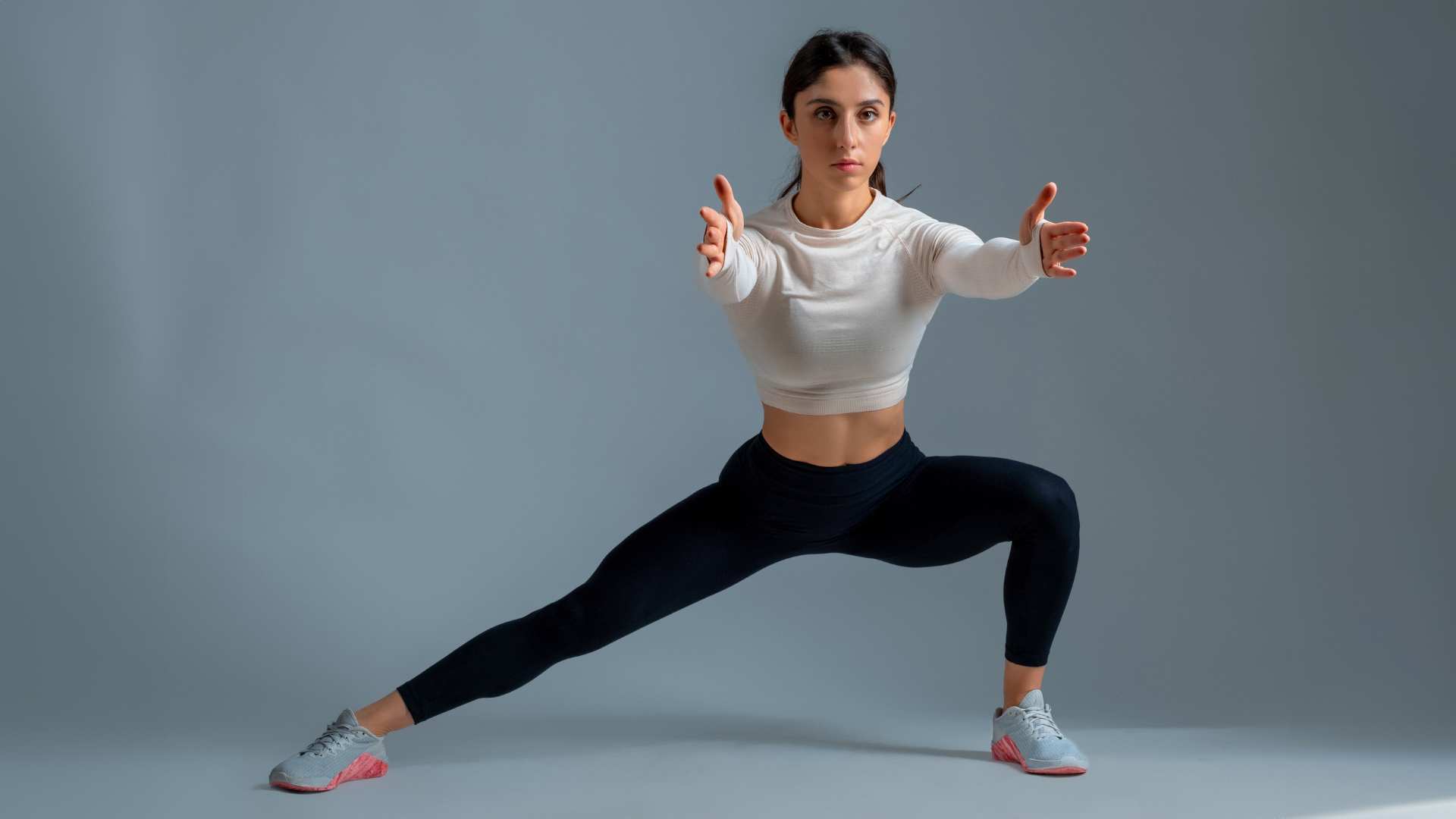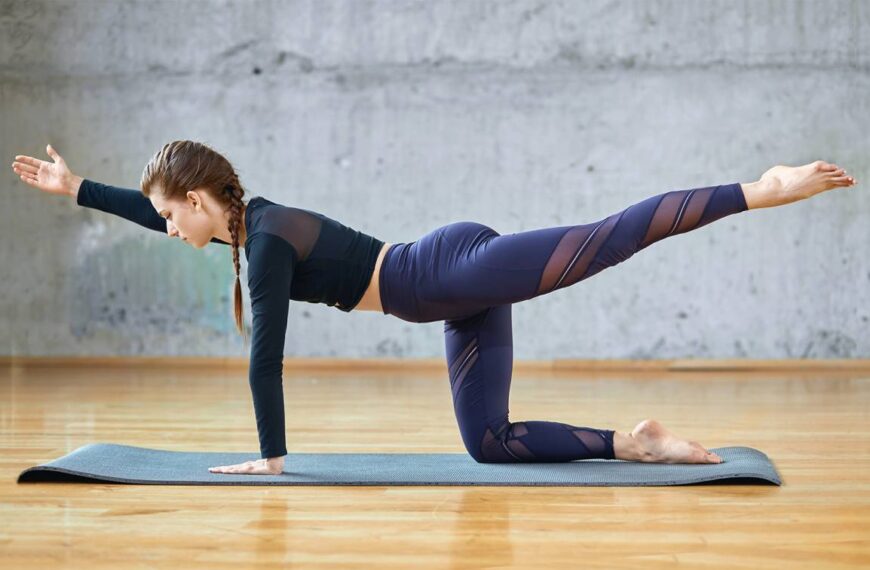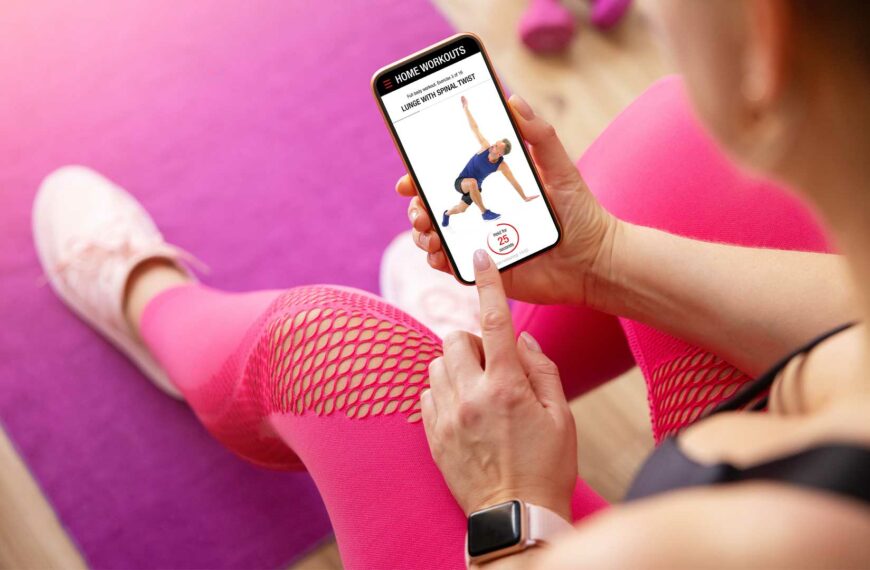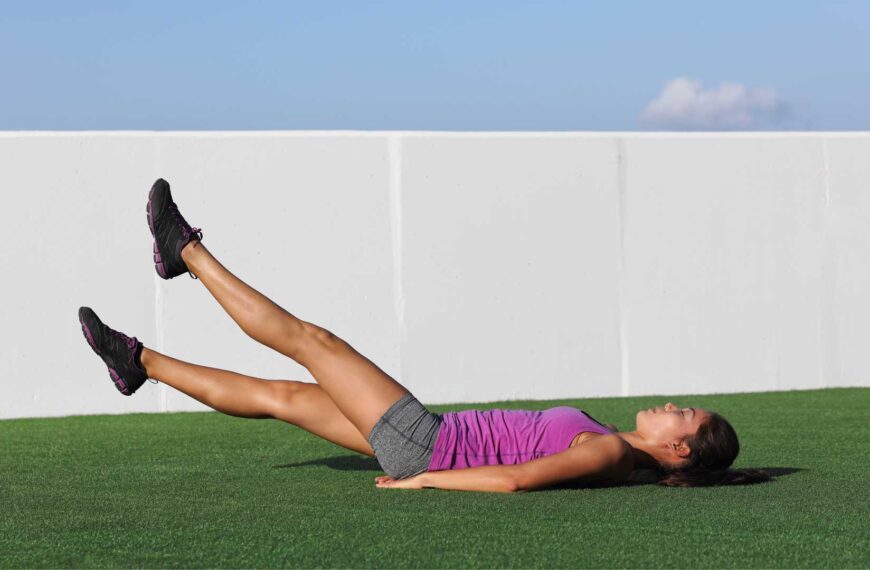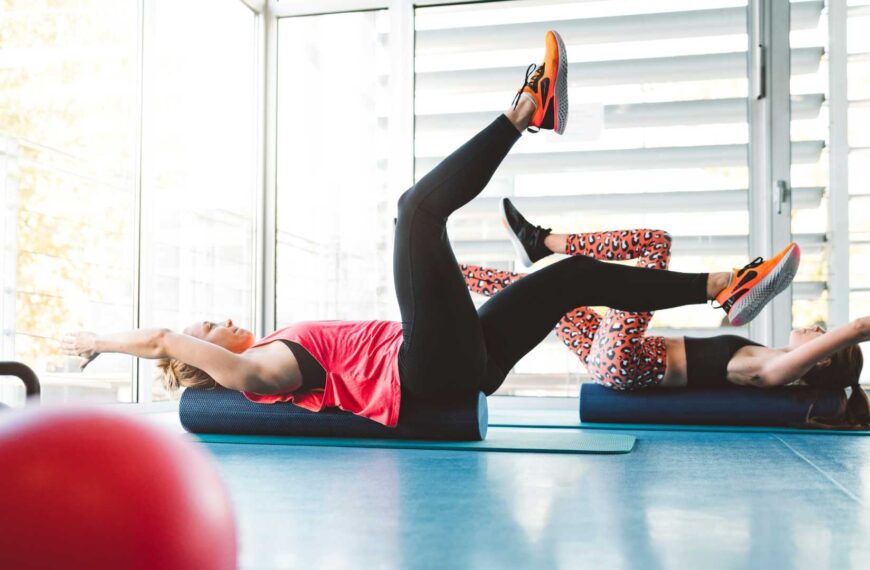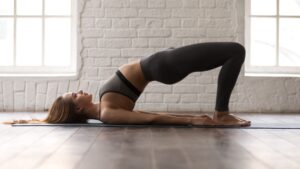Image Source: Workout Trends
Are you looking to take your plank exercises to the next level? The straight arm plank to leg lift is a foundational exercise that targets the core muscles and builds strength throughout the entire body. It serves as a solid base for more advanced variations, such as the leg lift.
In this comprehensive guide, we will walk you through the correct form and technique for performing a straight arm plank, explain the importance of core strength for progression, teach you how to incorporate leg lifts into your plank routine, discuss common mistakes to avoid, explore variations and challenges, and provide tips on how to incorporate the progression into your workout routine. Whether you’re a beginner or an experienced fitness enthusiast, this guide will help you unlock the secrets of the straight arm plank to leg lift progression.
What you will learn:
- How to perform a Straight Arm Plank to Leg Lift correctly and avoid common mistakes.
- The role of core strength in progressing to a leg lift from a straight arm plank.
- Modifications, variations, and challenges to incorporate into your workout routine.
Key points:
- Proper form and alignment are essential for a straight arm plank, with guidance from a personal trainer.
- Core strength is crucial for progressing to a leg lift, with exercises like pelvic tilts and hollow holds.
- Personal trainers provide support, feedback, and personalized workout plans for optimal results.
Use of Merlin App for Straight Arm Plank to Leg Lift
The Merlin App is a valuable fitness tool that can provide guidance and assistance when performing exercises like the Straight Arm Plank to Leg Lift. This exercise, often used to enhance core strength and stability, can be challenging, especially for beginners. The app offers step-by-step instructions and real-time feedback to help users perform this exercise correctly and effectively.
When you access the Straight Arm Plank to Leg Lift exercise on the Merlin App, it typically begins with clear instructions on how to get into the starting position and maintain a proper plank posture. The app uses AI technology to track your body position and form during the exercise. This means it can alert you if your hips are sagging or your shoulders are not properly aligned, ensuring that you maintain a straight and strong plank.
As you start lifting one leg while in the plank position, the app continues to monitor your form and balance. It will provide real-time feedback if you’re not lifting your leg to the appropriate height or if you’re compromising your core stability in the process. This instant feedback is invaluable for preventing incorrect techniques that can lead to injury and for maximizing the benefits of the exercise.
Understanding the Straight Arm Plank
The Straight Arm Plank to Leg Lift is a fundamental exercise that targets the core muscles, including the abs, obliques, and lower back. It also engages the shoulders, chest, and glutes, making it a full-body workout. To perform a Straight Arm Plank to Leg Lift correctly, follow these steps:
- Start in a push-up position, with your hands directly under your shoulders and your body in a straight line from head to toe.
- Engage your core muscles by pulling your belly button towards your spine. This will help stabilize your body and protect your lower back.
- Keep your neck in a neutral position, looking down towards the floor.
- Press through your palms and lift your body off the ground, maintaining a straight line from your head to your heels.
- Hold this position for as long as you can while maintaining proper form and breathing steadily.
It is important to maintain proper alignment and avoid common mistakes in the straight arm plank. Some common mistakes include sagging hips, rounding the back, or lifting the hips too high. To avoid these errors, focus on engaging your core muscles and keeping your body in a straight line throughout the exercise. A personal trainer can provide guidance and corrections to ensure proper form and alignment.
| Exercise Name | Description |
|---|---|
| Plank Variations | Include side plank, forearm plank, and single-arm plank to engage different muscle groups and increase core strength. |
| Stability Ball Plank | Place your forearms on a stability ball instead of the floor to challenge your core stability. |
| Plank with Knee Tucks | From a Straight Arm Plank to Leg Lift, alternate bringing each knee towards your chest, engaging your core and hip flexors. |
| Plank with Mountain Climbers | From a Straight Arm Plank to Leg Lift position, alternate bringing each knee towards your chest in a running motion, simulating climbing a mountain. |
| Plank with Shoulder Taps | From a Straight Arm Plank to Leg Lift position, lift one hand off the ground and tap the opposite shoulder, engaging your core and stabilizing muscles. |
| Plank with Hip Dips | From a Straight Arm Plank to Leg Lift position, lower your hips towards one side, engaging your obliques, and then repeat on the other side. |
| Plank Jacks | From a straight arm plank position, jump your feet wide and then back together, engaging your core and adding a cardiovascular element. |
Developing Core Strength for Progression
Core strength is essential for performing advanced variations of the plank exercise, including the leg lift. By strengthening your core muscles, you will build a solid foundation and improve your overall stability and balance. Here are some exercises and techniques to help you develop core strength:
- Pelvic Tilts: Lie on your back with your knees bent and feet flat on the ground. Slowly tilt your pelvis forward, pressing your lower back into the floor. Then, tilt your pelvis backward, arching your lower back slightly. Repeat this movement, focusing on engaging your core muscles and maintaining a neutral spine.
- Hollow Holds: Lie on your back with your arms extended overhead and your legs straight out in front of you. Lift your head, shoulders, and legs off the ground, forming a hollow position. Engage your core muscles and hold this position for a few seconds, gradually increasing the duration over time.
A personal trainer can design a personalized core strengthening program based on your current fitness level and goals. They can provide guidance on proper technique, monitor your progress, and adjust the program as needed to ensure continued improvement.
Progressing to Straight Arm Plank to Leg Lift
Adding Straight Arm Plank to Leg Lift increases the challenge and activates the core muscles even further. Here’s how to progress from a straight arm plank to leg lift:
- Start in a Straight Arm Plank to Leg Lift position, with your hands directly under your shoulders and your body in a straight line.
- Engage your core muscles and maintain a stable position.
- Lift one leg off the ground, keeping it straight and parallel to the floor.
- Hold this position for a few seconds, focusing on maintaining proper form and balance.
- Slowly lower your leg back down and repeat with the other leg.
For beginners, it may be helpful to start with knee lifts or partial leg lifts before progressing to full leg lifts. This allows you to gradually build strength and stability in your core muscles. A personal trainer can provide modifications and guide you through the progression based on your individual abilities and goals.
Common Mistakes to Avoid
As you progress to a leg lift from a straight arm plank, it is important to be aware of common mistakes that can compromise your form and effectiveness. Here are some mistakes to avoid:
- Sagging Hips: Allow your hips to drop towards the floor, disrupting the straight line of your body.
- Rounding the Back: Let your upper back round, which can strain the lower back and reduce the effectiveness of the exercise.
- Lifting the Leg Too High: Lift your leg higher than parallel to the floor, which can shift the focus away from the core muscles.
To maintain proper form and alignment, focus on engaging your core muscles, keeping your body in a straight line, and listening to your body. If you experience any discomfort or pain, stop the exercise and consult with a healthcare provider or personal trainer.
Variations and Challenges
Once you have mastered the Straight Arm Plank to Leg Lift, you can explore a variety of variations and challenges to keep your workout routine engaging and effective. Here are a few options to consider:
- Alternating Leg Lifts: Instead of lifting one leg at a time, alternate between lifting the right leg and the left leg. This challenges your core muscles and improves coordination.
- Side Plank Leg Lifts: Start in a side plank position, with one hand on the ground and the other arm extended towards the ceiling. Lift the top leg off the ground and hold for a few seconds. Lower the leg back down and repeat on the other side.
- Plank with Arm Lifts: From a Straight Arm Plank to Leg Lift position, lift one arm off the ground and extend it forward. Hold for a few seconds, then lower the arm back down and repeat with the other arm.
Each variation should be performed with proper form and alignment. It is important to listen to your body and progress at a pace that is comfortable for you. A personal trainer can introduce new variations and challenges, provide step-by-step instructions, and ensure safety and effectiveness.
Incorporating the Progression into a Workout Routine
To incorporate the progression from a straight arm plank to a leg lift into a balanced workout routine, consider the following suggestions:
- Sets, Reps, and Rest Intervals: Start with 2-3 sets of 8-10 reps on each side, gradually increasing the number of sets and reps as you get stronger. Take a short rest interval of 30-60 seconds between sets to allow your muscles to recover.
- Combination Exercises: Combine the plank progression with other exercises to create a full-body workout. For example, you can perform a set of plank leg lifts followed by push-ups, lunges, or banded glute kickbacks. This will engage multiple muscle groups and provide a more comprehensive workout.
- Personalized Workout Plan: Work with a personal trainer to design a customized workout plan that incorporates the plank progression and addresses your specific goals and needs. A personal trainer can provide ongoing support, motivation, and accountability, helping you achieve optimal results.
In conclusion, mastering the straight arm plank to leg lift progression requires proper form, core strength, and gradual progression. By following the steps outlined in this guide and working with a personal trainer, you can unlock the secrets of this powerful exercise and take your workout routine to new heights. Remember to listen to your body, avoid common mistakes, and seek guidance from a professional to ensure safety and effectiveness. Start your journey from plank to power today!

